Get to know the essence of bonito flakes, an indispensable ingredient in Japanese cuisine
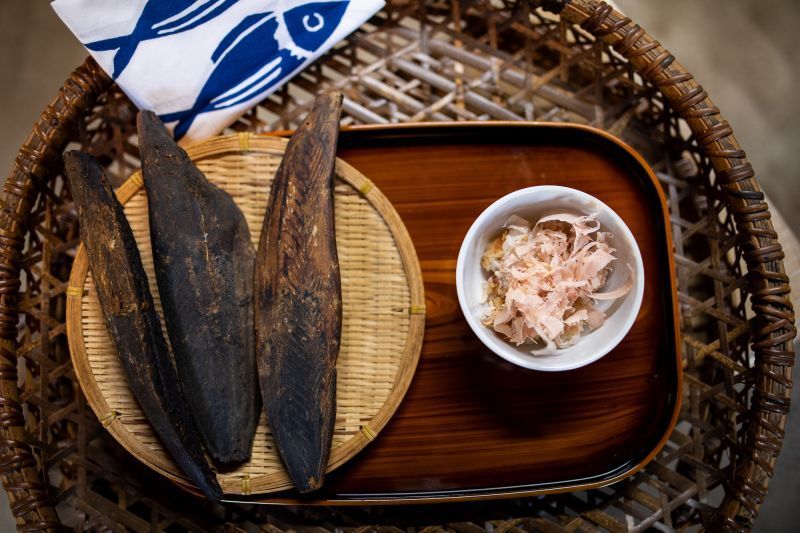
Japanese food is attracting worldwide attention for its health benefits, and “dashi” is indispensable to its flavor. Dashi is usually made from dried kelp or dried bonito flakes. This time, we visited a long-established store in Mie that makes katsuobushi (dried bonito flakes).
Written by Pete Leong
Mie Prefecture is famous for its fresh seafood, and its bonito catch is so large that it ranks in the top five in Japan every year. Katsuobushi is a preserved food made by boiling, smoking, and drying bonito. It has been eaten in Japan since ancient times, and there are records of its dedication to the Ise Jingu Shrine.
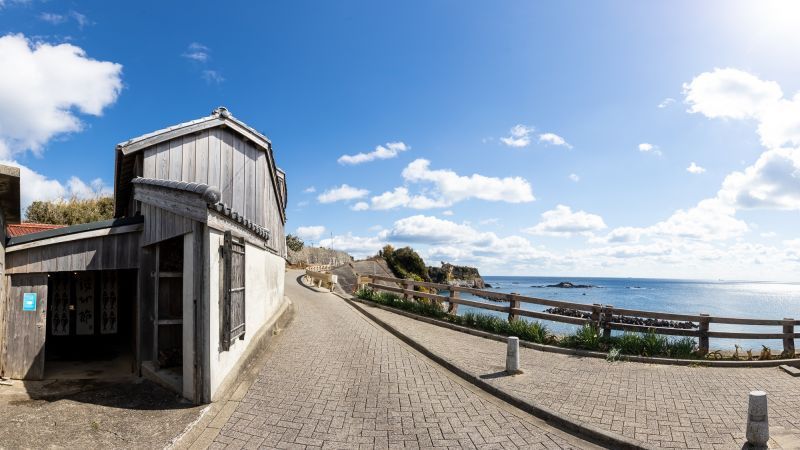
This time we visited “Katsuo no Tenpaku” in Shima City, about an hour drive from Ise Jingu Shrine. It is located on a hill in Daio Town, Shima City, famous for the Daiozaki Lighthouse, and has a very nice view facing the sea. The name of this area is “Nakiri,” and bonito fishing and bonito flakes have long been popular here. Katsuo no Tenpaku has been making katsuobushi for generations and is said to be so old that the actual date of its establishment is unknown.
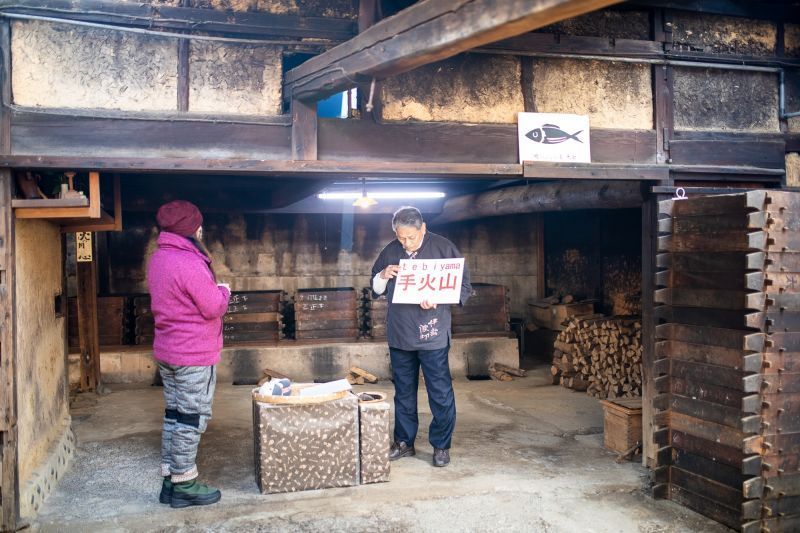
Here, you can not only buy dried bonito flakes, but also visit the dried bonito flake hut that was built in 1946 and is still in use today; learn how dried bonito flakes are made and history of Ise-Shima; and try your hand at shaving bonito flakes yourself.
Visitors can also learn about the ancient method of making dried bonito flakes, which has a long history here.
It is called the “Tebiyama style,” a style of slow smoking where the amount of heat is adjusted by hand, depending on the season and the condition of the fish, and there are only about ten such production places remaining in the whole country.
It is called the “Tebiyama style,” a style of slow smoking where the amount of heat is adjusted by hand, depending on the season and the condition of the fish, and there are only about ten such production places remaining in the whole country.
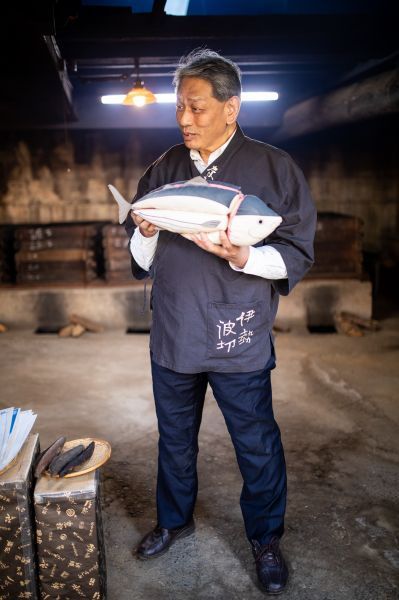
We found our way to Katsuo no Tenpaku along a very narrow road that runs along a cliff overlooking the ocean. A friendly staff member came out to greet us and show us into the factory.
It was a lovely all wood, smoky old hut where we were greeted by Yukiaki Tenpaku, and he promptly began explaining to us his method of producing katsuobushi and the history of these fine fishy flakes in Japanese cuisine.
For the uninitiated, bonito flakes at first appearance resemble fine wood shavings. I still remember the first time I was offered some to eat when I came to Japan 20-plus years ago and thinking “Why is there wood on top of this rice?” And I remember my first time eating Okonomiyaki and seeing how the katsuobushi danced around on top of it, waving in the heat. Ever since then, I have loved it but never had the chance to see how it was made.
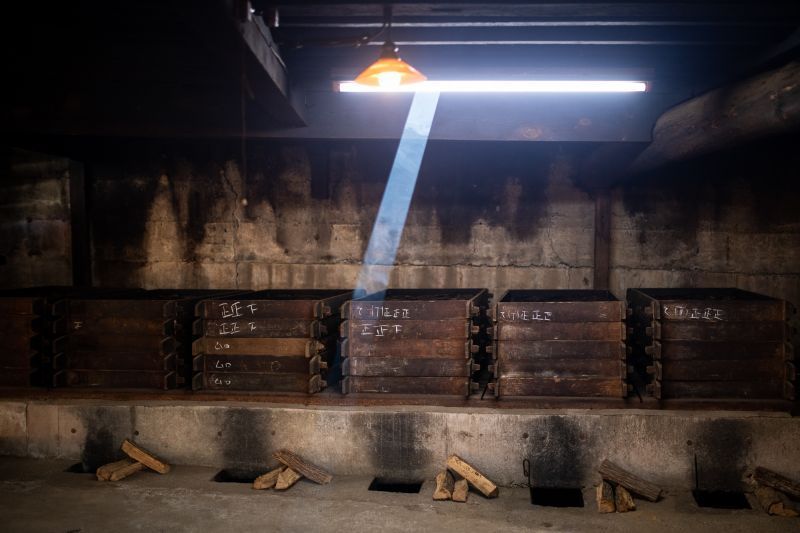
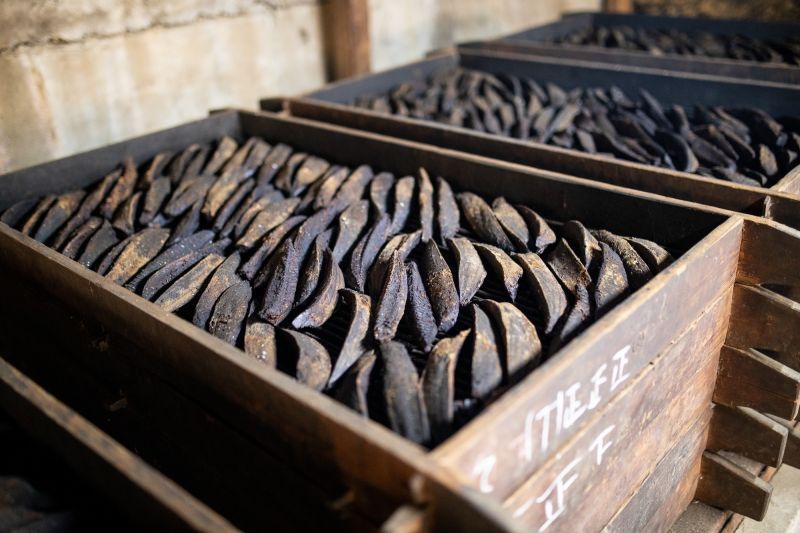
Mr. Tenpaku showed us his multiple wooden holders where he had hundreds of bonito drying and being smoked above the fire pit. He explained how this process of smoking the fish took a total of six months before the bonito was ready to be shaved to make the flakes. It takes one month of smoking for 1.5 hours a day, then five months for molding (fermentation).
Over this long period of time, the fish has time to be completely smoked out and to ferment.
Over this long period of time, the fish has time to be completely smoked out and to ferment.
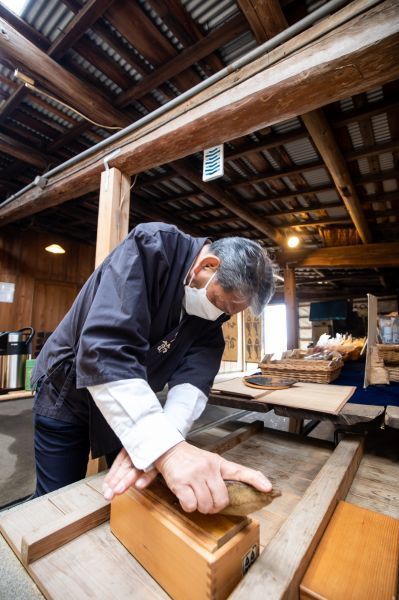
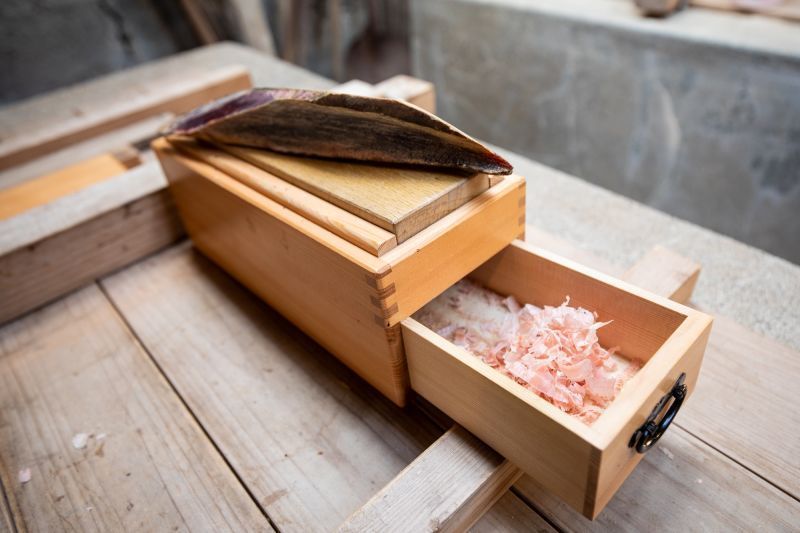
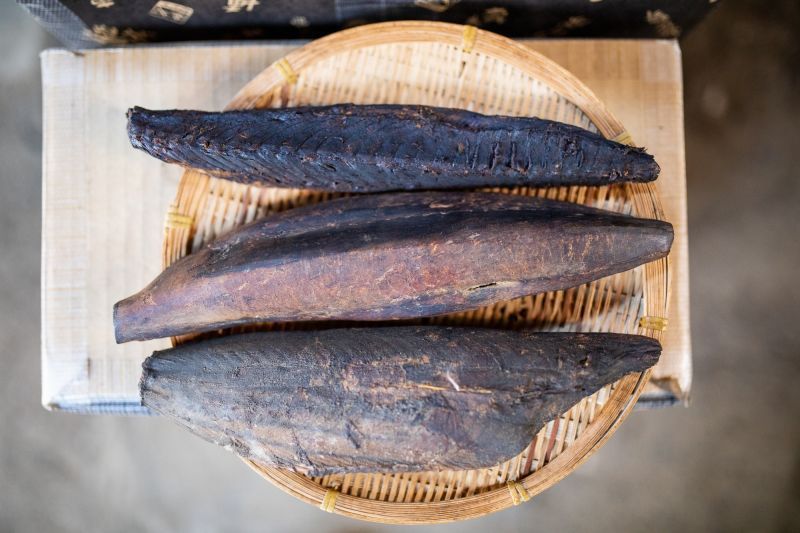
When the fish are ready, they take on the appearance of a black block of wood. And they are just as hard as well. Mr. Tenpaku demonstrated how to make the flakes by grating the dried bonito on a traditional grater – essentially a wooden box with a blade on top. When a fish is pushed along the top of the box the shavings fall down into the box and are then ready to be used in cooking. I love it in all kinds of food but I like to eat it just as it is as well. My cats sure do, too!
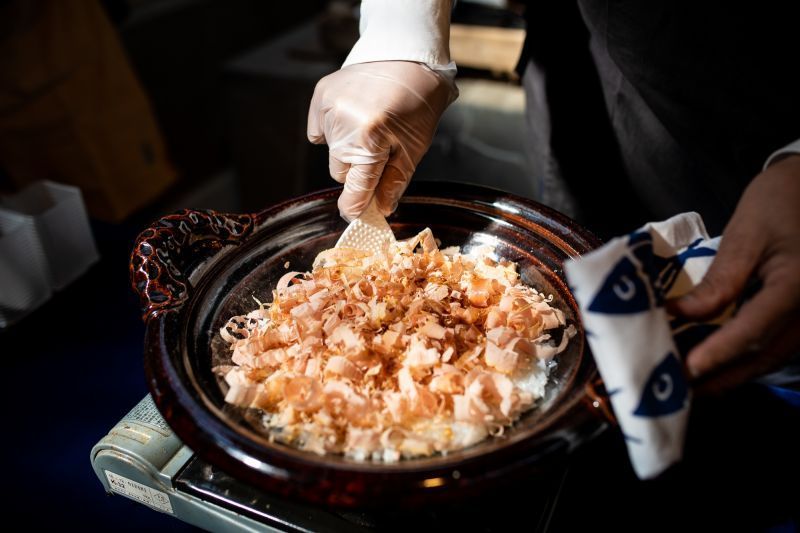

Mr. Tenpaku and his assistant next kindly cooked up some rice with their katsuobushi on top to try. It smelt amazing! We tried two kinds, one with just the katsuobushi mixed into rice with some soy sauce and one with a bonito “dashi,” like a soup made from the bonito mixed in with the rice to add more flavor. Both were wonderful and it was easy to tell the difference between this high-quality katsuobushi and cheap generic store-bought kinds.
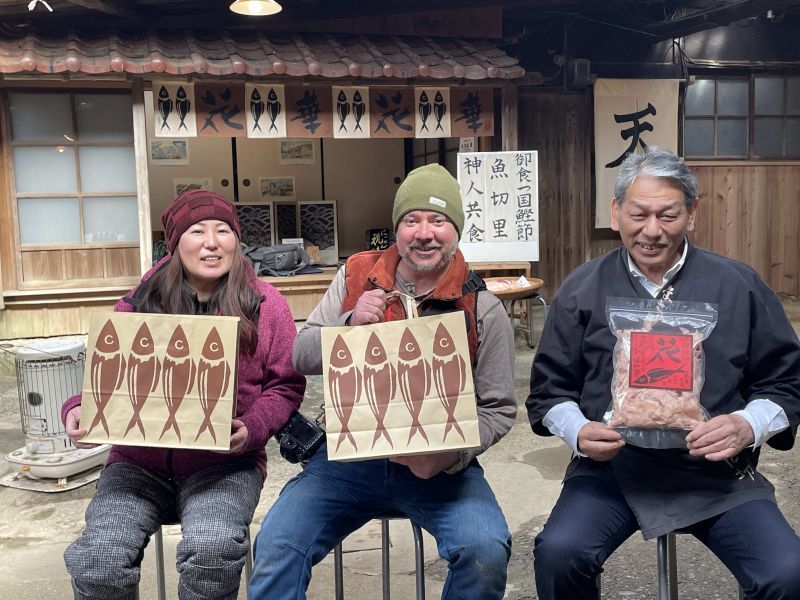
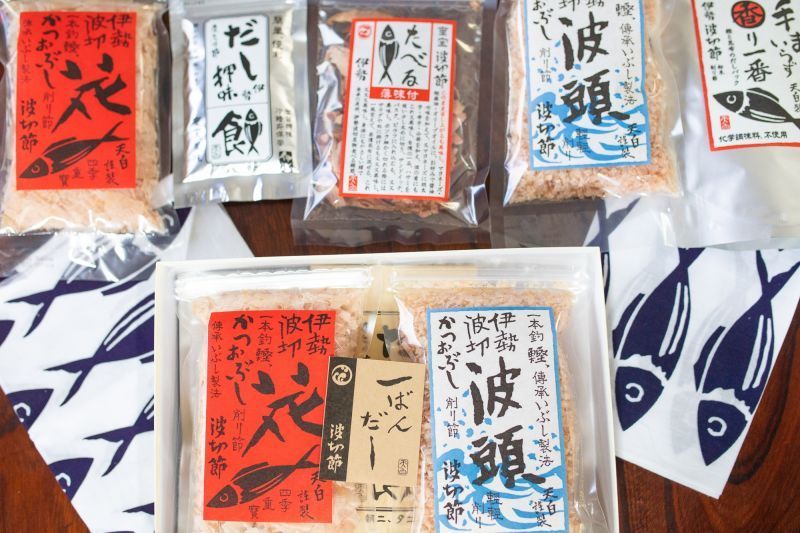
We wrapped up our tour of their facilities by taking some photos together and they presented us with various kinds of katsuobushi to take home. We both had a fantastic time learning the history of this essential part of Japanese cuisine and were grateful for their very friendly hospitality.
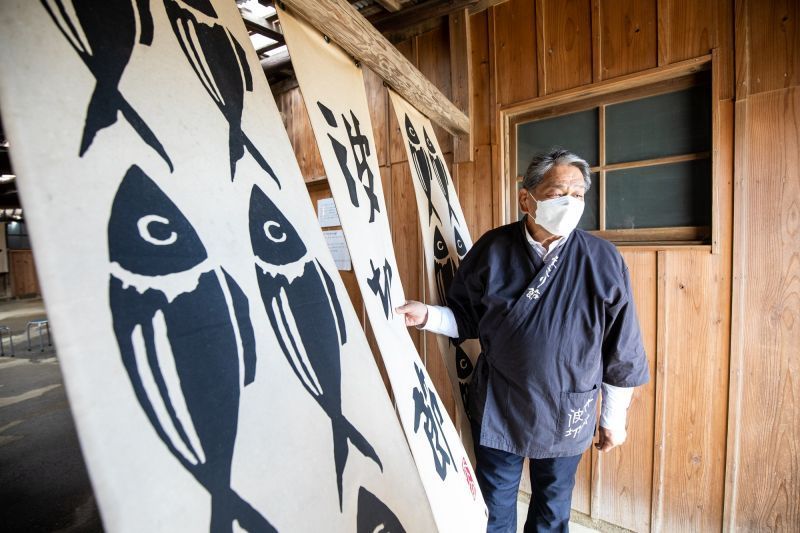
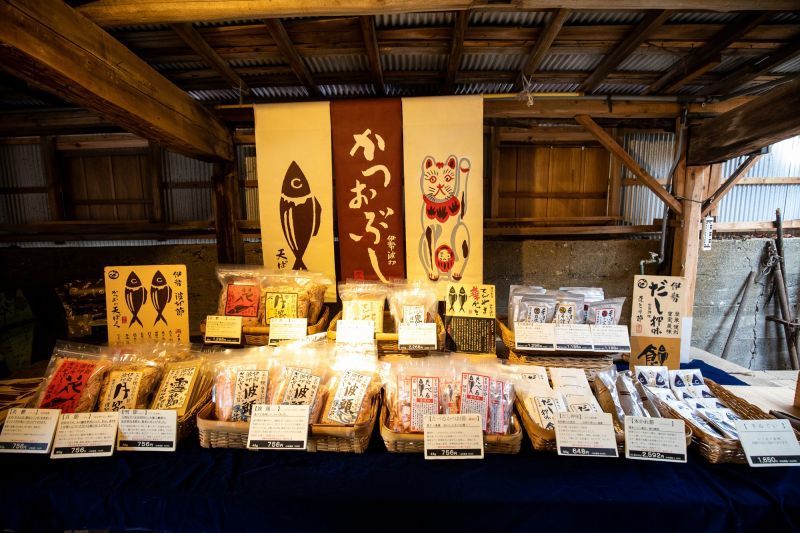
When you are next in the area, do drop by and check out Mr. Tenpaku’s workshop. His bonito flakes can be purchased in his shop or online from this website
https://anything-from-japan.com/food-beverages/seafood/katsuobushi-bonito-flakes
https://anything-from-japan.com/food-beverages/seafood/katsuobushi-bonito-flakes
After our tour of the Tenpaku’s workshop, we decided to take a look around the local area, including the Daiosaki Lighthouse just up the road and the fun shops and fish markets around the fishing port.